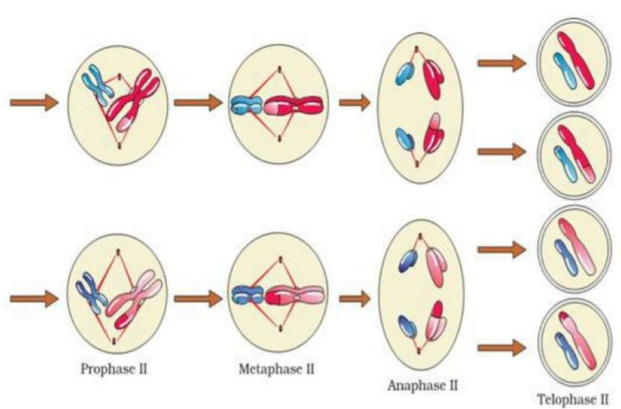CBSE Class 11 Biology Cell Cycle and Cell Division Important Questions - FREE PDF Download
FAQs on Important Questions for CBSE Class 11 Biology Chapter 10 - Cell Cycle and Cell Division
1. What type of questions can I expect from Chapter 10 of NCERT Solutions for Class 11 Biology?
Chapter 10 of Class 11 Biology is based on cell cycle and cell division. Students can mostly get questions based on cell division. Mitosis and Meiosis are the two main processes of cell division discussed in this Chapter. Students can prepare all NCERT Solutions for Chapter 10 of NCERT Solutions for Class 11 Biology to understand the type of questions that are asked in the exams. Students can also download the notes of Chapter 10 of Class 11 Biology from Vedantu for free.
2. What can I learn from Chapter 10 of NCERT Solutions for Class 11 Biology?
Students can learn about cell division that takes place in human beings in Chapter 10 of Class 11 Biology. They will learn the different steps involved in cell division. Students will also learn the importance of cell division in life. Students will also learn how cell division helps in the formation of daughter cells from the mother cells. It is an interesting chapter and gives important information about genetic traits in human beings.
3. How many questions are expected to be asked from the Chapter 10 of NCERT Solutions for Class 11 Biology?
Chapter 10 of Class 11 Biology, Cell Cycle and Cell division is an important chapter for the students preparing for NEET. Students can get 9 percent of the total questions from this chapter in the NEET Exam. Therefore, students must understand the main concepts given in the chapter cell cycle and cell division. Students can download the NCERT Solutions for class 11 chapter 10 from Vedantu for a clear understanding of the topics.
4. What factors can bring changes in the cell cycle and cell division according to Chapter 10 of Class 11 Biology?
Different factors can affect the cell cycle and cell division. The different factors include hormones, size of the cell, growth factors, mitogens, chemical signals, and karyoplasmic ratio. Cell cycle and cell division is a long process and it involves different steps. Students will study the different steps involved in the cell cycle and cell division in detail in Chapter 10 of Class 11 Biology. They can also refer to Vedantu's NCERT Solutions for Class 11 Biology Chapter 10 to understand the basics of cell division and cell cycle.
5. Why is Meiosis an important part of cell division according to Chapter 10 of Class 11 Biology?
Meiosis is an important part of cell division because it helps to preserve the original number of chromosomes received from each parent cell across generations. It is also needed for genetic variability that occurs from one generation to another. The most important role played by meiosis is the production of gametes that help in sexual reproduction. It is also important for the formation of new combinations of traits. Details about meiosis are discussed in Chapter 10 of Class 11 Biology.
6. Why is mitosis significant as discussed in Chapter 10 of Class 11 Biology?
Mitosis is significant because it ensures the equal distribution of genetic material into two daughter cells, preserving genetic stability. It is crucial for growth, tissue repair, and asexual reproduction in multicellular organisms.
7. What are the key stages of the cell cycle explained in Chapter 10 of Class 11 Biology?
The cell cycle consists of two main phases: Interphase and M Phase (Mitotic Phase). Interphase is further divided into G1, S, and G2 phases. These stages are crucial for DNA replication and cell preparation for division, which are explained in detail in Chapter 10.
8. How does Chapter 10 of Class 11 Biology describe the role of checkpoints in the cell cycle?
Checkpoints in the cell cycle, such as the G1, G2, and M checkpoints, ensure proper regulation and prevent errors during cell division. They check for DNA damage, proper replication, and spindle assembly, maintaining the integrity of the cell division process.
9. What is the difference between mitosis and meiosis as described in Chapter 10 of Class 11 Biology?
Mitosis produces two genetically identical daughter cells, while meiosis results in four genetically distinct gametes with half the chromosome number. These differences and their significance are thoroughly discussed in this chapter.
10. What are the practical applications of studying cell cycle and cell division in Chapter 10 of Class 11 Biology?
Understanding the cell cycle and cell division has applications in cancer research, regenerative medicine, and biotechnology. It helps in developing treatments for diseases caused by uncontrolled cell division and advancing stem cell therapies.


























